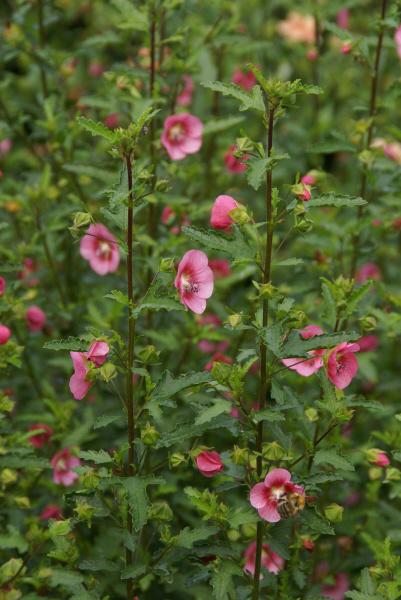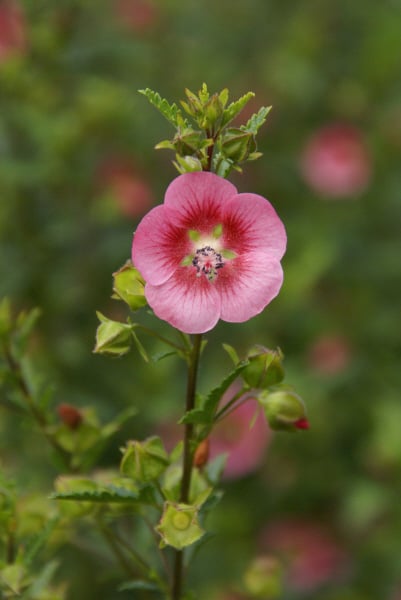Anisodontea capensis
Cape mallow
An upright sub-shrub with hairy stems and small, hairy, evergreen leaves. The flowers resemble a small hibiscus, ranging from pale pink to dark red-purple and appear in summer and autumn
Size
Ultimate height
0.5–1 metresTime to ultimate height
2–5 yearsUltimate spread
0.5–1 metresGrowing conditions
Moisture
Well–drainedpH
Acid, Alkaline, NeutralColour & scent
| Stem | Flower | Foliage | Fruit | |
| Spring | Green | |||
|---|---|---|---|---|
| Summer | Pink Purple | Green | ||
| Autumn | Pink Purple | Green | ||
| Winter | Green |
Position
- Full sun
Aspect
South–facing or West–facing
Exposure
Sheltered Hardiness
H2Botanical details
- Family
- Malvaceae
- Native to GB / Ireland
- No
- Foliage
- Evergreen
- Habit
- Bushy
- Genus
Anisodontea are evergreen, woody-based perennials and shrubs with simple or palmately-lobed leaves and saucer-shaped, five-petalled flowers borne in the leaf axils over a long period between summer and autumn
- Name status
Correct
- Plant range
- South Africa (Cape)
How to grow
Cultivation
May survive outdoors in a sunny, sheltered spot in mild areas but normally grown in a cool greenhouse for summer bedding or as a patio plant. Needs good drainage and full sun
Propagation
Propagate by seed in spring or by semi-ripe cuttings with bottom heat in summer
Suggested planting locations and garden types
- Patio and container plants
- Mediterranean climate plants
Pruning
Pruning group 9, tip prune young plants to encourage bushiness
Pests
May be susceptible to glasshouse red spider mite, glasshouse whitefly and aphids
Diseases
Generally disease-free
Love gardening
Sign up to receive regular gardening tips, inspiration, offers and more
View our Privacy Policy
Get involved
The Royal Horticultural Society is the UK’s leading gardening charity. We aim to enrich everyone’s life through plants, and make the UK a greener and more beautiful place.

